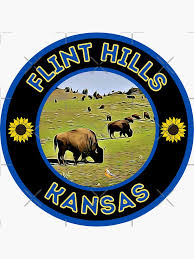National CyberCrime Statistics
Average Cost of a Single Attack
Of Attacks Are Aimed at Small Business
Of Small Businesses Prepared to Defend Themselves
Map of Flint Hills (KS)
Flint Hills (KS) Network Penetration Testing Experience
Adams Brown Technology Specialists has significant experience providing network penetration testing and cybersecurity services to organizations in Flint Hills and across Kansas. Our team has worked for years to bolster protection and reduce the potential for a breach. Combining deep technical knowledge and practical experience allows us to deliver insights that protect your organization against outside threats. The result is a testing experience that gives management peace of mind that data is protected and systems are properly fortified.
About Flint Hills (KS)
 The Flint Hills region of Kansas is a uniquely preserved stretch of tallgrass prairie that spans eastern Kansas and extends into northern Oklahoma. Known for its rolling limestone and chert-capped hills, the area has largely resisted traditional agriculture due to its rocky soil, which has helped protect its native grasslands. As a result, the Flint Hills contain the largest intact tallgrass prairie ecosystem in North America. This ecological treasure is home to a wide variety of flora and fauna, with deep-rooted grasses and wildlife ranging from bison to rare birds and amphibians.
The Flint Hills region of Kansas is a uniquely preserved stretch of tallgrass prairie that spans eastern Kansas and extends into northern Oklahoma. Known for its rolling limestone and chert-capped hills, the area has largely resisted traditional agriculture due to its rocky soil, which has helped protect its native grasslands. As a result, the Flint Hills contain the largest intact tallgrass prairie ecosystem in North America. This ecological treasure is home to a wide variety of flora and fauna, with deep-rooted grasses and wildlife ranging from bison to rare birds and amphibians.
The community in the Flint Hills is largely rural and centered around cattle ranching, which thrives on the region’s nutrient-rich grasses and is supported by practices like annual controlled burns. Towns across the region, such as Emporia and Cottonwood Falls, reflect a close-knit, agrarian culture that places a high value on land stewardship and conservation. Cultural and educational institutions like the Flint Hills Discovery Center and events such as the Symphony in the Flint Hills reinforce a strong regional identity rooted in history, ecology and the arts.
The local economy is modest and largely based on agriculture, with a focus on sustainability and preservation. While population density is low, community collaboration is strong, with efforts led by organizations like the Flint Hills Regional Council and The Nature Conservancy to maintain the delicate balance between economic use and ecological protection.

